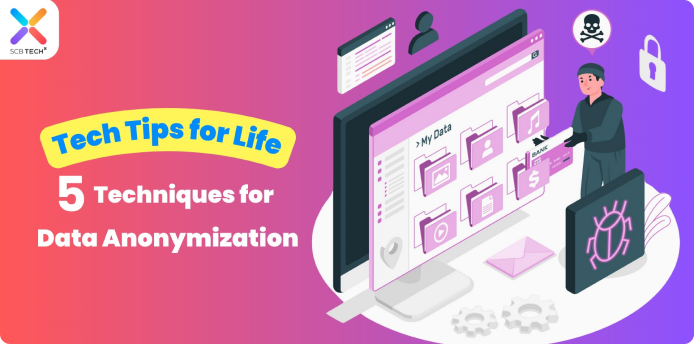
Cloud technology has changed how we live, work, and operate businesses. By enabling seamless access to tools, files, and data no matter where we are, the cloud has become an essential part of modern life. But what exactly is the “cloud,” and how can it help individuals and businesses grow?
This blog dives deep into understanding cloud technology and explores its potential to transform industries. Whether you’re an entrepreneur, or simply curious about the impact of cloud computing, you’re in for an inspiring read.
What is the Cloud?
At its core, “cloud” refers to servers accessed over the Internet and the software and databases running on those servers. Rather than hosting these services on your own devices or servers, cloud computing enables users to access them from remote data centers worldwide.
But why does this matter? Imagine you lose your phone but can still log into your email or social media account from a new device. That’s the power of the cloud—applications and files are stored remotely, so they’re always accessible. From Gmail to Google Drive and Instagram, cloud computing underpins many tools we rely on a daily basis.
Types of Clouds
Cloud computing comes in several forms, each designed to meet different needs and solve specific challenges. Understanding the types of clouds can empower businesses and individuals to leverage the best solutions for their goals. Here are the 4 types of clouds:
1. Public Cloud
Public clouds are accessible to multiple users and owned by third-party providers. Services like Amazon Web Services (AWS), Microsoft Azure, and Google Cloud offer on-demand resources and scalability, making them ideal for startups, enterprises, and developers seeking cost-effective solutions without the burdens of managing physical infrastructure.
2. Private Cloud
A private cloud is dedicated to a single organization, offering enhanced security, control, and customization. These clouds can be hosted on the organization’s premises or managed by third parties. They are often used by industries like finance and healthcare that require stringent data privacy controls.
3. Hybrid Cloud
Hybrid clouds combine the best qualities of both public and private cloud environments. By enabling seamless data movement between the two, hybrid clouds allow organizations to scale flexibility while keeping sensitive data secure. This model is perfect for businesses needing balance between accessibility and compliance.
4. Multi-Cloud
Multi-cloud involves using multiple cloud providers to meet varying needs. This approach reduces dependency on a single provider, enhances redundancy, and allows organizations to optimize costs or performance based on specific applications or workloads.
Every type of cloud comes with unique advantages, and the choice often depends on specific requirements for scalability, security, and cost of the business. Selecting the right type of cloud is a pivotal step toward maximizing efficiency and driving innovative solutions.
Key Benefits of the Cloud for Businesses
- Cost Efficiency: Companies no longer need to invest in or maintain expensive physical servers; cloud providers manage the infrastructure, reducing overhead costs. This allows businesses to redirect resources toward growth and innovation.
- Scalability: The cloud enables companies to easily scale their IT resources up or down based on demand. You can expand storage, computing power, or services as your business grows, paying only for what you actually use—no wasted resources.
- Global Accessibility: With cloud-based tools, your team can work from anywhere in the world as long as they have Internet access. This boosts productivity, encourages remote collaboration, and ensures that work can continue uninterrupted, even when team members are dispersed.
For small businesses and startups, the cloud levels the playing field by providing access to world-class infrastructure and tools without the hefty price tag associated with traditional IT setups. It empowers businesses to focus on their core goals while staying flexible and competitive in an ever-changing market.
How Does Cloud Computing Work?

Cloud computing relies on virtualization technology, which allows one physical machine to host multiple virtual systems, known as virtual machines. These virtual machines are isolated yet highly efficient, enabling cloud providers to serve thousands of users simultaneously.
The magic lies in the redundancy built into cloud services—your data and applications are backed up across several machines and regions. Even if one server goes offline, your files and services remain accessible.
Users can access cloud systems through web browsers or dedicated apps, ensuring compatibility across all devices. It is this flexibility that has driven the widespread adoption of cloud technology.
Cloud Services Categories
Not all clouds are created equal. They come in a variety of models, tailored to different needs. Here’s a breakdown of the common cloud service models:
1. Software-as-a-Service (SaaS)
Think of SaaS as renting a fully furnished apartment—you don’t need to “build” or manage anything. Popular examples include service providers like Salesforce, Google Workspace, and Slack. Businesses can use SaaS cloud to access software over the Internet, eliminating installation hassles altogether.
2. Platform-as-a-Service (PaaS)
A cloud in the PaaS model gives developers the tools they need to build applications. Examples like Microsoft Azure and Heroku provide infrastructure and development tools, enabling tech teams to focus strictly on innovation.
3. Infrastructure-as-a-Service (IaaS)
IaaS allows businesses to lease virtual servers and storage. Companies like AWS (Amazon Web Services) empower organizations to create custom IT environments without owning physical servers.
4. Function-as-a-Service (FaaS)
A rising star in cloud computing, FaaS (or serverless computing) only runs application components as needed, saving resources and cost for businesses. Imagine renting a dining room only during meal hours—efficient and cost-effective!
Each category serves a unique purpose and is shaping the way industries deploy technology.
Cloud as A Foundation for Advanced Innovation
The cloud has become the backbone of modern digital transformation, enabling innovations like DevSecOps, DevOps tools, and NDID that are redefining how businesses develop, secure, and operate in the digital age. By leveraging the power of the cloud, organizations can streamline operations, enhance security, and deliver services with unprecedented speed and reliability.
DevOps and DevSecOps
DevOps, a methodology that merges development and IT operations, fosters a collaborative and efficient framework for faster software delivery and improved reliability. By breaking down silos between teams, DevOps ensures a smoother development lifecycle, enabling businesses to adapt quickly to market changes and customer needs.
Building on the foundation of DevOps, DevSecOps introduces “security” as a core element of the development process, embedding it into every stage of the lifecycle. This proactive approach ensures that vulnerabilities are identified and addressed early, reducing the risks associated with cyber threats and ensuring compliance with regulatory standards.
Key Steps to Implementing DevSecOps in the Cloud:
- Automated Testing: Implement automated testing tools to conduct ongoing security and quality checks throughout the development pipeline, minimizing human error and improving efficiency.
- Code Analysis: Regularly scan code for vulnerabilities and implement fixes to maintain the integrity of your software. Tools like SonarQube and Checkmarx can simplify this process.
- Compliance Monitoring: Continuously monitor for adherence to industry regulations such as GDPR, HIPAA, or ISO 27001, ensuring that your business stays compliant while building customer trust.
- Change Management: Empower developers to push secure updates quickly and safely, reducing downtime and improving the end-user experience.
By integrating security seamlessly into development workflows, DevSecOps ensures that cloud applications are not only agile but also resilient against modern threats, providing a solid foundation for innovation and growth.
DevOps Tools Revolutionizing the Cloud
To fully unlock the potential of the cloud, businesses are turning to advanced DevOps tools like Kubernetes, Docker, and Terraform. These tools allow organizations to orchestrate their cloud environments with precision, enabling dynamic scaling, efficient resource management, and seamless updates.
- Kubernetes: This open-source container orchestration tool automates deployment, scaling, and management of applications, ensuring consistent performance even during high-demand periods.
- Docker: Docker simplifies the process of building, shipping, and running applications inside containers, promoting portability across environments and reducing infrastructure costs.
Terraform: As an infrastructure-as-code tool, Terraform allows businesses to define and provision cloud resources in a repeatable and predictable way, streamlining cloud management.
NDID – National Digital ID System
National Digital ID systems (NDID) are revolutionizing how digital identity (eKYC) is managed in Thailand, leveraging the cloud to provide secure and scalable solutions. Whether it’s signing contracts, accessing government services, or onboarding new employees, NDID systems simplify identity verification while ensuring high levels of security and data privacy.
By utilizing cloud infrastructure, NDID systems can handle large-scale data operations, allowing businesses and governments to operate safely in an increasingly digital world. The integration of NDID also reduces administrative burdens, accelerates processes, and enhances user experience.
The cloud, combined with advanced methodologies like DevOps and DevSecOps, and tools like Kubernetes, is paving the way for a more secure, agile, and innovative future. Whether it’s simplifying digital identity with NDID or optimizing cloud operations, these advancements are driving the next generation of digital transformation.
How Is the Cloud Impacting Our World?

The cloud isn’t just transforming businesses—it’s reshaping how we live, work, and connect, offering conveniences we often take for granted. From streaming our favorite shows to enabling remote work, cloud computing has quietly become an essential part of everyday life.
Everyday Applications of the Cloud
- Education: Online learning portals and resource databases allow students to access study materials from anywhere, bridging gaps in traditional education systems and enabling lifelong learning. Cloud-based tools also support virtual classrooms, collaborative projects, and real-time feedback.
- Entertainment: Platforms like Netflix and Spotify rely on the cloud to stream content seamlessly to millions of users worldwide. Cloud infrastructure ensures uninterrupted service, personalized recommendations, and the ability to access content on multiple devices.
- Government: Public sectors leverage cloud technology to improve efficiency and transparency. Services like online tax filing, public record management, and digital ID verification benefit from faster processing times, increased security, and better accessibility for citizens.
Advantages of Cloud Storage
- Accessibility: Securely access files, applications, and tools from anywhere in the world, on any device with an Internet connection. This flexibility has been crucial in supporting remote work and global collaboration.
- Redundancy: Built-in backups ensure data reliability and protection against hardware failures or cyberattacks. This peace of mind is critical for businesses managing sensitive information.
- Elasticity: The cloud allows businesses to easily scale storage up or down based on changing needs, saving costs by avoiding overinvestment in physical infrastructure.
That said, each business has unique needs and must consider factors like security, compliance, and workload type when choosing a cloud model. Finding the right balance between public, private, and hybrid cloud models is crucial to optimizing performance, maximizing value, and ensuring long-term success.
By embracing cloud technology, we are not just improving convenience—we’re paving the way for smarter, more connected, and sustainable systems that benefit individuals, businesses, and society as a whole.
The cloud is no longer a trend; it’s a necessity driving digital growth. Combining cloud technology with innovations modern innovation ensures leading-edge tools are secure, scalable, and reliable.
For businesses aiming to thrive in tomorrow’s competitive landscape, adopting cloud solutions is vital. And this is where expert platforms like SCB TechX and xPlatform come into play—offering tailored services to help businesses harness the full potential of the cloud.
Transform Your Business with Cloud Solutions from SCB TechX
As a leading innovative solution provider in Thailand, SCB TechX offers comprehensive cloud solutions tailored to meet diverse business needs, including:
- Cloud Foundation and Landing Zone (Cloud Accelerator Program): Enable organizations to establish a robust cloud foundation for future growth, ensuring secure and efficient cloud adoption.
- Cloud Security: Advanced cloud security solutions, including thorough security assessments and penetration testing, to protect organizations against emerging cyber threats.
- Cloud Migration: Our expert teams facilitate smooth transition of existing systems to the cloud, ensuring minimal disruption to business operations.
- Cloud Operation Management: Comprehensive management services ensure optimal performance of cloud environments.
In addition to cloud solutions, SCB TechX also offers innovative xPlatform and eKYC solutions for secure digital identity verification and comprehensive digital transformation offerings.
For more information about cloud solutions and digital transformation services, contact SCB TechX at contact@scbtechx.io
Facebook: SCB TechX
Medium: medium.com/scb-techx
LinkedIn: www.linkedin.com/company/scb-tech-x/
YouTube: SCB TechX




